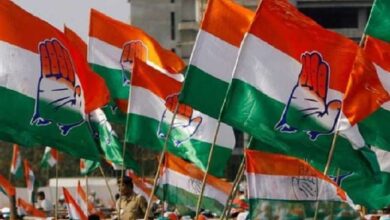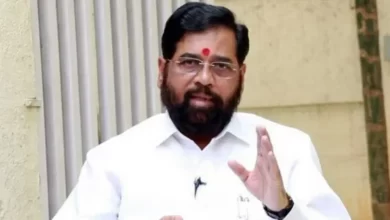rising unemployment crisis

[ad_1]
There are more than 60 lakh government posts vacant in the country. There are more than 8.72 lakh vacancies in the central government alone.
Saroj Kumar
There are more than 60 lakh government posts vacant in the country. There are more than 8.72 lakh vacancies in the central government alone. Only by filling them will a new and higher path of economic development emerge. We should not wait for economic instability to turn into social instability.
Unemployment has become such a problem of the country, for which neither solution is visible, nor is there any solution to it. Uncontrollable unemployment is galloping and we are watching mechanically standing. In the last month i.e. October, five lakh people became unemployed. Unemployment not only destroys the future of the individual, but also destroys the future of his dependents, the economy and finally the country. It hollows out more from inside than it affects from outside. It breaks the mind and keeps the mind. Just imagine the final form of a century a country will create with a broken heart.
It is true that the unemployment crisis is not of today. But the big truth is that today this crisis has become formidable. Whereas the gravity of the crisis calls for swift action. The first three reports of the Periodic Labor Force Survey (PLFS) of the National Statistical Office (NSO) show that the unemployment situation had already worsened before the pandemic. In May 2019, when the first report of PLFS for June 2017-July 2018 came out, there was an uproar.
The unemployment rate hit a forty-five year high of 6.1 per cent, following the so-called economic reforms demonetisation and GST. The subsequent two annual reports of the PLFS showed a slight improvement in the unemployment rate, from 5.8 per cent during July 2018-June 2019, to 4.8 per cent in the period July 2019-June 2020. For a developing country like India, even such a rate of unemployment was no less than an epidemic. But in February-2020, just before the Corona epidemic, the unemployment rate climbed to 7.8 percent. People took it as historical. But during the pandemic it became prehistoric. Since then the unemployment rate has remained at least at historical levels.
Data from the Center for Monitoring Indian Economy (CMIE) shows that in September last month, the unemployment rate fell to a low of 6.86 percent for the first time in six months. It was expected that October would bring extra light in the festive season. But the unemployment rate deepened on the new moon night and reached a high of 7.75 percent. This situation is when unemployed in the country is considered only to those who do not have even an hour of employment in a week. The unemployment rate in October is also a mirror of the slump in the job market, as this increase in the unemployment rate has come despite a decrease in the labor force participation rate (LPR) in the labor market. This is a dangerous trend.
Labor force participation in the labor market was 40.7 per cent in September, which declined to 40.4 per cent in October. The reduction in the labor force participation rate should have brought down the unemployment rate, because the unemployment rate is calculated on the basis of the total labor force available in the market, that is, the total number of people engaged in employment and seeking employment. The market demand naturally increases during the festive season, especially Diwali. This increases employment opportunities. But in October, about five million people became unemployed.
The total number of employed people in September was about 40 million sixty two lakh, which decreased to 40 million seven lakh seventy thousand in October. It is a different matter that more than seven lakh new jobs were created in the urban area. But in rural areas more than six million became unemployed in both organized and unorganized sectors. The rural unemployment rate rose to 7.91 percent in October from 6.06 percent in September. While the urban unemployment rate came down to 7.38 percent from 8.62 percent in September.
Most of the employment in rural areas is from the unorganized sector and the share of unorganized workers in the total labor force of the country is about ninety nine percent. A major part of the unorganized workers is engaged in agriculture and MGNREGA. But in October, 24 lakh workers in the agriculture sector became unemployed. Despite the Rabi sowing season, the unemployment of workers in the agriculture sector is a sign of inflationary pressure. Due to declining income and rising inflation, it has become a compulsion for the farmer to reduce the cost of farming. Of course this will have an effect on production. But in the same month the number of farmers increased by ninety lakhs. That is, due to lack of employment in the market, people continue to return to agriculture. One reason for this is six thousand rupees reaching the accounts of farmers every year.
MGNREGA is the second largest medium providing employment in rural areas. But in the current financial year, only Rs 73,000 crore was allocated in the name of this scheme. This money became empty within six months and the Diwali of MGNREGA workers turned black. According to government data, till October 29, the state had spent a total of Rs 79,810 crore on this head. In a total of twenty one states, the entire budget of MNREGA has been exhausted, many states have spent more than the budget. Now in the winter session of Parliament, supplementary budget will be allocated for MNREGA, only then employment will be available.
MGNREGA is the only and largest employment scheme of the Central Government to provide direct employment to unskilled workers.
But as soon as MNREGA wages fell in comparison to the market, the scheme started losing its sheen. There is a different calculation of MGNREGA wages in different states and it ranges from a minimum of one hundred ninety three (Chhattisgarh, Madhya Pradesh) to a maximum of three hundred and eighteen (Sikkim). That is, a MNREGA worker can earn a maximum of Rs 31800 in a year. In such a situation, how any one family will run, that is the big question. Unemployment of educated skilled youth is a different story. The government has no concrete plan for this part of the labor force. The public sector is on the verge of being wiped out and the private sector is not in a position to create new jobs.
The Purchasing Managers’ Index (PMI) of IHS Markit India has been rising steadily. Manufacturing PMI reached 55.9 in October, up from 53.7 in September. The manufacturing PMI in February 2020, just before the pandemic, was 54.5. This means that the economic health of the manufacturing sector has exceeded pre-pandemic levels, but the unstable economic environment is an obstacle in the way of new investment. Companies are not ready to take the risk. This is the reason why new jobs are not being created here. Yes, there is definitely a Diwali atmosphere in the service sector, and due to this, the unemployment rate in the urban area has come down in October.
It is certain that the private sector is not going to make new investments until the economic environment stabilizes. In such a situation, it becomes the moral responsibility of the government to leave the growth rate exercise and invest in jobs to create a stable economic environment. Even if it does not create new jobs, then at least fill the vacant posts. This will create a sustainable demand situation in the market, then new jobs will also come in the private sector. There are more than 60 lakh government posts vacant in the country. There are more than 8.72 lakh vacancies in the central government alone. Only by filling them will a new and higher path of economic development emerge. We should not wait for economic instability to turn into social instability.
,
[ad_2]






